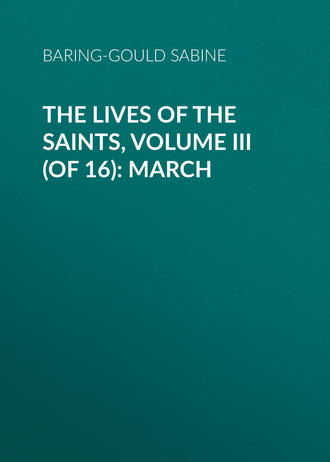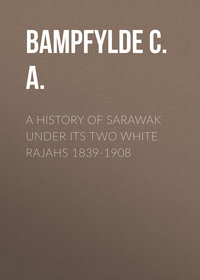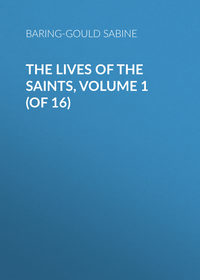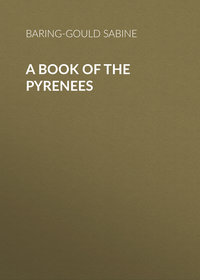 полная версия
полная версияThe Lives of the Saints, Volume III (of 16): March
Many strange traditions have attached themselves to Joseph of Arimathæa, as that he came to Britain, and planted his staff at Glastonbury; but as these legends are wholly worthless, they must be here passed over.
His body is said to have been buried by Fortunatus, patriarch of Grado, in the abbey of Moyen-Moutier; but no relics of it now remain there, though some are shown elsewhere.
SS. MARTYRS IN THE SERAPION(A.D. 390.)[Roman Martyrology. Authorities: – Socrates, Hist. Eccl. lib. v. c. 16; Sozomen, lib. vii. c. 15.]
The temple of Bacchus at Alexandria having been given to the Christians to be converted into a church, the patriarch ordered its thorough purification. Whilst this was being performed, many abominations and much evidence of trickery were brought to light. This so exasperated the pagans that a sedition broke out, and rushing down from the Serapion, a magnificent temple situated on a hill and fortified, they carried off a number of Christians, and bringing them into the temple, endeavoured to force them to sacrifice to Serapis. As they refused, the pagans crucified some, broke the bones of others, and put others to death in various ways. When the emperor Theodosius heard of the tumult, he ordered those who had fallen victims to be enrolled in the number of the blessed, but forbade any reprisals upon their executioners, hoping that this exhibition of mercy would be efficacious in attracting them to the true faith. He, however, ordered the Serapion to be levelled with the dust.
S. AGRICOLA, B. OF CHALONS-SUR-SAONE(A.D. 580.)[Roman and Gallican Martyrologies. Authority: – His contemporary, Gregory of Tours.]
S. Agricola was born of a senatorial family. In stature he was diminutive, but the greatness of his soul redeemed him from that disrespect which his short stature might have brought upon him. He was eloquent, of refined manners, prudent in judgment. In his youth he formed a warm attachment for S. Venantius Fortunatus, the Christian poet, and author of the magnificent hymn, Vexilla regis, "The royal banners forward go." In 532, he was appointed bishop of Châlons-sur-Saône. He died at the age of eighty-three, in the year 580, and was buried in the Church of S. Marcellus, near Châlons, where his relics are preserved over the high altar.
S. PATRICK, AP. OF IRELAND(ABOUT A.D. 465.)[Roman, and almost all Western Martyrologies, Bede, Usuardus, Ado, &c. Authorities: – The most authentic are S. Patrick's Confession, and his letter against Coroticus, Fiech's hymn, or metrical sketch of the life of the saint, and the life by Probus. The hymn is attributed to Fiech, bishop of Sletty, who lived in the 5th cent. The Bollandists and other critics doubt his having been the author of it; but at any rate it is very ancient, and not later than the 7th, or perhaps the 6th cent. Probus is supposed to have been teacher of a school at Slane, who was burnt in a tower fired by the Danes, in 950. There is also a hymn attributed to Secundinus, one of S. Patrick's first companions, in which the saint is spoken of as still living. A very interesting document, of the early part of the 7th cent., is a litany in Anglo-Saxon characters, published by Mabillon, in which S. Patrick is invoked. The Antiphonarium Benchorense, apparently of the 8th cent., contains a hymn in honour of S. Patrick. There exist some notes or scholia on Fiech's metrical life, which are usually quoted under the title of Fiech's Scholiast. They were written partly in Irish, and partly in Latin. These notes are of various dates, and by different hands, and consequently of very different values. Colgan gives some lives, which he calls the second, third, and fourth, but these are full of fables, and seem to have been copied either from each other, or from some common original. Here and there they contain facts, but these are smothered in fable. Colgan is utterly wrong in assigning to them a high antiquity. The Tripartite Life, so called because it is divided into three parts, is published by Colgan, and attributed by him wrongly to S. Evin, who lived in the 6th cent. This work, though founded on older lives, was really put together in the 10th century, as certain persons are named in it who lived about that period. With the exception of certain fables it contains, it is a very useful work, and contains a much greater variety of details concerning the proceedings of S. Patrick during his mission in Ireland than any other of his lives. It is not to be confounded with a Latin work quoted by Usher under the same title, and which belongs to a later period. Of all the lives of S. Patrick this is the worst, though it has been published oftener than the others. "So wretched a composition is scarcely worth attending to," says Dr. Lanigan. Another authority is Jocelin of Furness, who flourished about 1185, and compiled S. Patrick's life at the request of Thomas, archbishop of Armagh, Malachias (another Irish prelate) and John de Courcy, the conqueror of Ulster. It is of little historical value compared with the earlier and more authentic sources of information, which it not unfrequently contradicts on the authority of some idle legend.]
The precise time at which Christianity was originally introduced into Ireland cannot be ascertained. Nor is it to be wondered at, that, while the first establishment of Christian Churches in Britain, Gaul, and Spain, is enveloped in obscurity, a similar difficulty should meet those seeking the origin of the Irish Church. Palladius, according to Prosper, was the first bishop sent from Rome to Ireland. He was a deacon of the Roman Church, who had already distinguished himself by his exertions in delivering Britain from the Pelagian heresy. From this and other circumstances, it seems probable that he was a native of that country. He was consecrated bishop and sent into Ireland, accompanied by some missionaries, four of whom, Sylvester, Solonius, Augustine, and Benedict, are mentioned by name in some of the lives of S. Patrick. It seems that his arrival was early in the year 431. The most authentic accounts of his mission agree in stating that, besides having baptized some persons, he erected three churches; and the news of his success, perhaps magnified in its transit, excited such a confident assurance in Rome of his complete conquest of the island to the Cross, that Prosper did not hesitate to say that, through the exertion of pope Celestine, Ireland was become a Christian country. This book "Against Cassian," was written not long after the mission of Palladius, and before he had heard of the reverses which that pioneer of the Gospel had met with. The success Palladius had met with alarmed the heathen, and he was denounced to the king of that part of Ireland in which he then was, as a dangerous person, and he was ordered to quit the country. He sailed from Ireland towards the latter end of the same year, 431, in which he had landed, and arriving in Britain, died, not long after, as is commonly reported, at Fordun, in the district of Mearns, in Scotland.
The great work of the general conversion of the people of Ireland was reserved for the ministry of S. Patrick, according to the Irish adage that, "Not to Palladius, but to Patrick, did God grant the conversion of Ireland."
The variety of opinions, and the many questions that have been agitated, concerning the country and time of the birth of S. Patrick, render it necessary to clear up these disputed points before proceeding with the main story of his life. It would be a waste of time to examine all the various opinions, that have been started on this subject, such as his having been born in Cornwall, in Pembrokeshire,51 or, what is strangest of all, in Ireland itself. The prevalent opinion since Usher's time has been that he was born at Kilpatrick, near Dumbarton. Usher was led astray by the scholiast on Fiech's hymn. Fiech says that S. Patrick was born at Nemthur (the holy tower) in Britain, and the scholiast identified this place with Alcwith, now Dumbarton. The scholiast guessed this, not knowing that the term Britain also applied to the whole of the North of Gaul, inhabited by the Armorican Gauls.52 Indeed Probus calls S. Patrick's country, and the town where his family lived, Arimuric, or Armorica. In the life of S. Fursey, we are told that this saint crossed the sea into the province of Britain, and proceeded through Ponthieu. Now Ponthieu is a maritime tract in Picardy, near Boulogne; and it is also to be observed that this district is said in the life of S. Fursey "to be called by the moderns Normandy." But S. Patrick in his confession says, "My father was Calpurnius, a deacon, son of Potitus, a priest, of the town of Bonavem Taberniæ. He had near the town a small villa Enon, where I became a captive." Bonavem (Ben-avon, British, the headland above the river) is the modern Boulogne-sur-mer, and the district of Taberniæ is Terouanne, in which it is situated. Boulogne was the Bonona53 of the Romans, and its Gallic name Ben-avon, exactly describes its situation on the summit of a hill. On the very edge of the cliff, a little east of the port, are the remains of the tower built by Caligula (A.D. 40), when he marched to the shore of the channel with an army of 100,000 men, boasting that he intended to invade the opposite coast of Britain, but contenting himself with gathering a few shells, which he called the spoils of the ocean. The tower is supposed to have been intended for a lighthouse, and its modern name La Tour d'Orde, a corruption of Turris Ardens, points it out as having been used for this purpose. A very good case is, however, made out for a site on the Roman Wall, in which case Patrick would be the son of one of the Roman colonists or defenders of the wall, and a native of Cumberland. In his epistle against Coroticus, S. Patrick tells us he was of an honourable family according to the flesh, his father having held the office of decurion, which conferred a certain amount of nobility. Clerks were not then forbidden to hold such offices. He calls the Romans his fellow citizens, and this circumstance, coupled with the fact, that the names of S. Patrick, of his father, and of his grandfather, are purely Latin, points to the conclusion that the family was of Roman extraction; but his mother, whose name was Conchessa, was the daughter of Erkbalius, or Ocbasius, (Erkbald?) a Frank.
His birth took place about the year 387, for at his consecration to the episcopate, a person divulged a fault he had committed thirty years before, when a boy of fifteen; and he was consecrated at the end of 431, or the beginning of 432; when the news of the death of Palladius reached him.
When S. Patrick was sixteen years old, Nial Navigiallach, or Nial of the Nine Hostages, an Irish king, in ravaging the coasts of Great Britain and Gaul, entered the port of Bonona, in 403, and carried off S. Patrick and many other youths captive. On being brought to Ireland, S. Patrick became the servant or slave of a man named Miliac, or Milcho, who lived in Dalrhidia, which is now comprised within the county of Antrim. Some say that he was a prince; others that he was a magus, that is, invested with a religious function; and others represent him only as a rich man. S. Patrick calls his master merely "a man," without adding anything concerning his situation in life. With that profound humility, which every line written by this truly great saint breathes, he tells us that he had been very careless about religion when a boy; but that, when he found himself in the misery of slavery, God opened his eyes to behold the wondrous things of His law. His occupation was to tend sheep on the wild brown bogs; and amidst snow, frost, or rain, he rose before daylight, that he might "prevent the day-break" with his prayers.54
One night, after he had been in service for six years, as he slept, he heard a voice cry to him, "Thou fastest well, and soon shalt return to thy country." Presently once more the voice said, "Behold, a ship is ready for thee." He tells this story himself. Moreover he heard that the ship was far off on the coast, a great many miles from where he then lived. So he betook himself to flight. "And by God's power," he adds, "I came to a good end;55 and I was under no apprehension until I reached the ship. She was then clearing out and I asked for a passage. The master of the vessel angrily bade me not think of going with him. On hearing this I retired to the hut where I had been received and lodged, and on my way prayed. But, before I had finished my prayer, I heard one of the men shouting after me, 'Come along! they are asking for thee.' So I returned immediately. And they said, 'Come, we will take thee on trust, (i. e., on the chance of getting paid the fare on reaching Bononia); we are about to sail, and hope to reach land in three days.'"
They at once set sail, and reached the coast of Gaul in three days, at Treguier, in Brittany. They travelled for twenty-eight days through a country rendered desolate by the ravages of the Franks. Whilst on their way, he and his fellow travellers were near perishing for want of food; and then the master of the ship or merchant, who had received Patrick and given him a passage, and who was now travelling along the same road with his wares, exclaimed, "Christian! thy God is powerful. Pray for us, for we are starving." The saint desired them to turn with faith to the Lord, and he prayed, and suddenly a drove of swine appeared crashing through the bushes, and they chased and killed many of them, and halted two days to recover and refresh themselves. The merchants gave thanks to the God of Patrick, and shortly after, finding some wild honey, they gave him a part, saying, "This is an offering. God be thanked."
A very curious story of this journey is told by the saint in his Confession. Having feasted on the pork, after long hunger, the natural result was an attack of night-mare, that same night, which he says seemed to him in his dream like Satan rolling a great rock upon his chest. In an ecstasy of fear he screamed out "Elias, Elias!" and thereupon he says, "Lo! the splendour of the sun shone on me, and dispelled all the burden on me." Dr. Lanigan says this is evidence of his invoking a saint. There can be little doubt that every well-instructed Christian of the time would have invoked a saint, but it seems probable here that this was not an invocation of the prophet Elias, but an invocation common perhaps among the heathen and half-converted Roman settlers, of "Helios!" the sun, which had passed into an exclamation; and this will explain the passage which immediately follows about the sun at once shining upon him. Patrick at this time was not well instructed in Christianity, and he had been stolen as a thoughtless boy from his home, before his education was complete, or his mind had turned to the truths of Christianity. In his old age he related this anecdote of himself, but it is impossible to conclude from the context what he meant by the exclamation.
S. Patrick reached home about the year 409, and remained there for a while. He was then aged twenty-two. Perhaps it was soon after this that he went to Tours and studied for four years. He then returned home to Bonona, and was again made captive, probably by a roving band of Frank marauders; but his captivity was of short duration, lasting only sixty days. His friends entreated him not to leave them, after all he had endured, but he relates that he saw in a vision of the night a man named Victoricius56 bringing him a letter, at the head of which were the words, "The voice of the Irish." And then he thought he heard the cry of many persons from one of the Irish forests, where they strayed in darkness and error, "We entreat thee, O holy boy, come and walk still in the midst of us!" And greatly affected, Patrick awoke.
About the year 418, he placed himself under the direction of S. Germain of Auxerre. After this period it is difficult, if not impossible, to arrange correctly the succeeding transactions of his life, until near the time of his mission. Nine years he spent in retirement in an island which has been conjectured to be Lerins. It was during the same interval, that S. Patrick accompanied S. Germain and S. Lupus of Troyes in their spiritual expedition to Great Britain, in the year 429, for the purpose of extirpating the Pelagian heresy, which had taken root in that island. This is stated in some accounts of S. Patrick's proceedings; and the lives, though they are silent about it, give nothing which might tend to invalidate it SS. Germain and Lupus returned to Gaul at Easter, in 430. It is very probable that the information which they might have obtained, during their residence in Great Britain, concerning the wants of the Irish Christians, was communicated to pope Celestine, who either had already determined on sending a bishop to Ireland, or was advised to do so by these prelates. And who was better calculated to take part in this mission than Patrick, who had lived six years in Ireland, and had acquired a sufficient knowledge of the language of that country? In 431, he was sent to Rome by S. Germain, recommended by him to the pope as a person fit to be employed in the work, of which Palladius was appointed the chief. Whether he arrived in Rome before Palladius set out, or not long after, cannot be ascertained. From the pope he received a benediction for the great mission which he was about to undertake; but he does not appear to have received episcopal ordination at Rome, for Palladius was already consecrated, and the news of his banishment had not as yet arrived. It appears, also, from the "Confession" of S. Patrick that he was consecrated not far from his own country. The account of S. Patrick's consecration by Celestine is not to be met with in any of the lives except those two compilations of legendary matter, Jocelin's and the Tripartite; whence it made its way into certain Breviaries. S. Patrick left Rome either late in 431, or early in 432. He was perhaps accompanied by Auxilius and Serenus or Iserninus. These were certainly afterwards in Ireland with S. Patrick, but whether they accompanied him from Rome, or were selected by him from among his acquaintance in Gaul, cannot be ascertained; and it is not certain that they came to Ireland till some years later.
We next hear of Patrick at Eboria (Eborica), Evreux, where he heard the news of the failure of the mission of Palladius. On receiving this information, it became necessary for him to be consecrated, and for this purpose he applied to a bishop resident in the neighbourhood, and from him received episcopal orders. His relations and friends hurried to Evreux to prevent his ordination; he was insensible to their entreaties, and then, hoping to raise a prejudice against him, a friend divulged a fault Patrick had committed when a boy. But all their efforts were in vain, for God was with him, and had marked him out for his great work.
Everything being arranged, S. Patrick embarked, probably at the mouth of the Seine, and had a prosperous voyage to Great Britain. According to Probus and some of the lives he crossed that country without stopping on the way.
He landed in Wicklow some time after April in 432. Pope Celestine was dead, and Sixtus III. sat in the Chair of S. Peter. Having landed, Patrick went to a place in the neighbourhood which cannot now be identified, and being repulsed by the natives, was obliged again to go on board his ship. He landed again at Lecale in the county of Down. A herdsman, thinking it was a party of marauders, ran to the lord of the district, named Dichu, and informed him of the arrival of a party of strangers. Dichu armed his retainers and hasted to the shore, but the peaceable appearance of the missioners disarmed him, and he brought them to his house, which was at the place now called Saul, and hospitably entertained them. There the saint had an opportunity of announcing to him the Christian faith, and Dichu was the first-fruits of his mission. All his family followed his example, and likewise became Christians; and S. Patrick celebrated divine worship in the barn of Dichu, which in after times became known as Sabhall Padruic, or the Barn of Patrick; and in after years it was converted into a church, and a monastery was attached to it.
S. Patrick did not remain many days at the house of Dichu, and left his ship or boat in the care of this new convert, until he should return. He then set out by land for the place where his old master, Milcho, lived. He was an obstinate unbeliever, and on hearing of S. Patrick's approach, was determined not to see and receive him.57
S. Patrick, finding his efforts for the conversion of Milcho unavailing, returned to the district in which Dichu resided, and remained there for several days, preaching the Gospel with great success. One of his principal converts on this occasion was Ross, son of Trichem, who lived near the present town of Downpatrick. In this neighbourhood he met a youth, called Mochoe, whom, after instruction, he baptized and tonsured, thus dedicating him to the ecclesiastical state. He also gave him the book of the Gospels and some sacred vessels. This must not, however, be understood as having all taken place during the present stay of S. Patrick at Lecale.
S. Patrick resolved on celebrating the Easter of 433 near Tarah, where the princes and nobles of the whole kingdom were to be assembled about that time. He, therefore, left his friend and convert, Dichu, and sailing southwards, arrived at Colp, in the mouth of the Boyne, and leaving his boat there, set out with his companions on foot for the plain of Bry, in which the city of Tarah was situated. On their way they passed the night in the house of a man of substance, named Seschuen, who became obedient to the faith, and was baptized, with all his house, by S. Patrick. A son of his, whom at his baptism our saint, considering his sweet disposition, called Benignus, became so attached to him that he insisted on accompanying S. Patrick, and he became one of the saint's most favourite disciples, and was afterwards consecrated archbishop of Armagh. It is not, however, to be supposed that the baptism of Seschuen and his family was accomplished on that occasion, but probably took place after the Paschal solemnity, which was near at hand.
On Easter-eve, S. Patrick arrived at Slane. He pitched his tent, and made preparations for celebrating the festival of Easter, and accordingly lighted the Paschal fire about night-fall. It happened that at this very time the king Leogaire (Lear) and the assembled princes were celebrating a religious festival in honour of the return of the sun to power and heat. Part of the ritual of this festival consisted in every fire being extinguished for some days previous, that all might be relighted from the sacred fire in the palace or temple of Temora, on Tarah hill, which was kindled on a certain day, now near at hand. Twilight had settled over the great plain, and all men waited for the red flame to shoot up on Tarah hill, a signal that the festival was begun, and that all might rekindle their hearth fires from the consecrated blaze. But a spark shone out far away on the plain, from the tent of Patrick, and consternation at this sacrilege and infringement of precedent became general. The king at once galloped to Slane, followed by a crowd, and accompanied by two priests, who assured him that unless this fire were extinguished, it would overpower their fires, and bring the kingdom to its downfall. On arriving within a short distance of the tent and fire, the king dismounted, seated himself, ordered his followers to seat themselves, and not to rise or show any respect to the violator of their laws, and then ordered Patrick to be brought before him. On his presenting himself, one alone rose and saluted him, breaking the king's command; this was the little lad Herc, son of Drogo, and the saint thereupon blessed him. He was afterwards bishop of Slane, and celebrated for his sanctity. He was ordered to declare his object in coming to Ireland, and contend with the wise men, or priests, next day. On Easter-day, therefore, he preached before the king and his nobles, and strove with the captious objections of the Wise-men. It was then, probably, when explaining the mystery of the Trinity, and when questioned as to the triple Personality of the One God, that he stooped and plucked a shamrock, and exhibited it as a symbol of the Catholic doctrine of the Triune God.58
Passing over certain contests between S. Patrick and the Wise-men, which are absurd parodies of those between Moses and the Egyptian enchanters, we find Dubtach, an eminent bard, boldly submitting to the faith, and dedicating his poetic talents to Christ. Some of his works are still extant. The king was not converted, but he permitted Patrick to preach freely the Word of God. From Tarah the saint proceeded to Tailten, where public games were celebrated; and it seems that the chiefs lately assembled for the religious solemnity at Tarah had adjourned thither. The apostle preached to Carlre, a brother of Leogaire, but was badly received by him. The conduct of Conall, another brother, was different; he listened to S. Patrick with delight, believed, and was baptized. To this memorable Easter week, which was the first that occurred since the saint's arrival on his mission, must be referred the origin of the festival of "S. Patrick's Baptism," anciently held in Ireland on April 5th.









